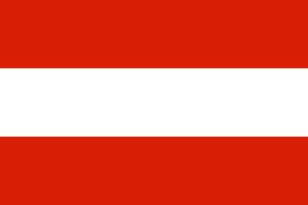Interview: Marc Marazzi Discusses AI and HPC's Transformative Impact on Data Centers
MARC MARAZZI, VP AT LEGRAND DATA CENTRES EUROPE, talks to DCS about AI and the related HPC challenges facing data centre owners and operators, explaining the ways in which Legrand’s infrastructure portfolio is designed to address this rapidly changing data centre landscape, and how the company continues to evolve to ensure an optimised customer experience.
AI – the great balancing act
EVERYONE AGREES that the AI explosion, with Generative AI applications already giving us some clue as to the likely impact, will be transformational. There’s considerably less agreement when it comes to the how, where and when, in terms of the exact ways in which AI will impact both the office experience and our leisure time. Nevertheless, we all want to understand what’s on the AI horizon. And that includes the data centre industry. The whole supply chain is busy trying to assess the impact of AI on the data centre sector. Is it ‘just another change’, like virtualisation and cloud before it, or are we talking a seismic change which no one has quite yet understood? Marc Marazzi sees the likely sheer pace and scale of AI adoption as a major challenge. “We are at the tip of the iceberg. There’s the ‘easy’ customer service, the question and answer-based AI, which is already being adopted, but then, as applications become more sophisticated, we’ll start seeing industries that we’re not even thinking about yet adopting these types of high performance compute requirements. And that will drive a significant push on colocation to get applications up and running very quickly, because, as soon as an industry and its users start adopting AI, the proliferation of these tools will be unbelievable.” Marc cites the example of the Zoom application explosion when the pandemic hit. In December 2019, the firm had 10 million subscribers and by June 2020 this figure had risen to 200 million. The application and all the associated IT and data centre infrastructure had to scale up massively. And AI will dwarf such rapid expansion.
The challenge for the data centre is to be high performance ready. As Marc explains: “I guess it’s going to be something of a balancing act because, sure, you can deliver it, but how efficient is that data centre going to be and how smart are you going to be in the investments you make so you don’t need to change everything in 12 or 18 months’ time? I think we’ll see the owners and operators looking at technologies that are efficient, fast to deploy and easy to adapt if the requirements change. And Legrand technology really allows you to do that, it allows you to scale up without massive changes to your data centre infrastructure.”
One of the major questions facing the industry is whether or not the AI workloads are best met through upgrading existing facilities, building brand new sites or perhaps a mix of the two (another hybrid approach).
Marc provides a real-world example of this dilemma: “I was recently in Oslo and I had such an interesting conversation with a CEO from a design and build company and a CEO from a colocation company. The common theme from them both was the big increase in power requirement and densities, which meant that they were having to look at data centres they’d built only 19 months ago and asking us to find ways of improving this infrastructure. People are looking at improved containment, improving airflow, or removing CRAC units and putting in rear door cooling. When it comes to new data centres, we are being asked for more efficient ways of deploying critical power. For example, our Starline track busway solution doesn’t just remove the spaghetti junction of cables under the floor it also provides the ability to add tap-offs (plug-in units) very quickly and to change them as and when more functionality is required.”
Marc continues: “We’re also seeing a hybrid approach, where people will update and renovate parts of the data centre, to make way for AI or high performance computing when those clients come in. For Legrand, there’s a major opportunity to help in terms of education – explaining what can be done. We’re spending more time on the same side of the table, talking about how to specify and build a particular solution, as opposed to being given a shopping list from the customer, saying this is what we want.”
Crucially, with the industry already on the road to sustainability, an AI build out cannot be allowed to derail this progress. So, the conversations Marc and his team are having with customers cover not just how quickly can a production site go into production so the end client can start delivering their services, but whether the technology solution is going to be sustainable. And this is a major strength for Legrand, which has always had very strong CSR goals. Whether through acquisitions, driving sustainability in the factories, or the way in which technology is deployed, the company thinks green as a matter of course.
Marc explains: “Our ColdLogik rear door coolers by USystems allow cooling up to 200 KW/rack using 800 watts of power for that particular rear door. Now, if we imagine what a CRAC unit costs to run to deliver that, it’s incredibly inefficient in comparison to what a rear door cooler can achieve. And with the rear door coolers, you can start off small, so you’re cooling, say, 72 racks, and if you need more you just add fans.
“If you built out a data centre with our Starline busways and busbars, our Minkels cabinets, which have the best airflow management on the market, and then the USystems rear door cooling, you have a very efficient data centre – and you will have freed up more space as well.”
Legrand’s AI/HPC data centre infrastructure portfolio
Marc has already explained how the ColdLogik RDHx rear door cooling solutions bring the cooling much closer to the cabinet, providing significant performance benefits when compared to CRAC units. Additionally, with these CRAC units taking up to a third of the space in a data hall, the rear door technology allows this space to be reclaimed. For a colo, where each cabinet might be earning them £18,000 a year, the return on investment of installing the rear door cooling solution is extremely attractive.
The technology and commercial win-win is a similar story when it comes to Legrand’s Starline busways, as Marc details: “With our busways providing continuous access you have the most effective way of implementing the power supply into the room – because it’s all overhead. Imagine if you have Remote Power Panels (RPPs) either end and you’ve got the cabling going from these into each cabinet. If you have changes required in these cabinets, the data centre will typically not remove the cables that are already in there as they are worried about pulling out the wrong cable(s). So, they just add more cables. If you are making a number of moves, adds, and changes over the year, and you are not moving the cables, that’s incredibly inefficient.
“You’re not being kind to the planet as you are using a lot of cabling and you now have these huge RPPs. If you think there might be six to eight RPPs in a hall – think of the commercial benefit of removing them – and use the reclaimed space for racks.”
One of the major benefits of the Starline busway solution is the custom nature of the tap-offs – you can have them in any configuration you require. Some clients buy certain types of tap-offs for specific applications that their customers might have, and also buy different tap-offs for other applications for the same customer. Engineers spend less time in the data centre because all they are doing is coming in and adding a tap-off. As Marc summarises: “Once you have the Starline busway in the data centre, you are just adding tap-offs for the amount of cabinets you need and the amount of changes that will be required.”
Optimising power management is another key aspect of ensuring an efficient data centre. With AI and other HPC loads placing new, higher demands on the power supply, Legrand’s latest intelligent rack PDU solutions are well placed to provide the necessary power monitoring and measuring. These PDUs provide real time visibility into the power consumption, enabling the operators to optimise energy use, prevent any overloads, and carry out predictive maintenance – looking at whether or not AI applications are going to cause any issues for any particular racks and/or servers. Intelligent load balancing is also a feature of the PDUs, which also offer energy saving modes.
The other PDU capability worth noting has to do with the outlets. Marc outlines: “Imagine someone rents out space in your cabinets and they are installing IT equipment with the old ‘kettle plug’ C13 connections. Their applications change – their project managers say, this is the IT equipment you should now use and these are C19 – but you are stuck with the old racks. Well, our intelligent rack PDUs have a hybrid outlet that can accommodate both the C13 or C19 connections.”
A familiar theme with the PDUs, as with Legrand’s other data centre infrastructure, is its flexibility to adapt when equipment moves and changes are made. Additionally, they can be colour coded, so users can work out the different phases they have got for that type of load balancing. Maximum efficiency and flexibility for the user.
Another solution of Legrand’s data centre infrastructure portfolio is the Minkels Nexpand cabinet platform. Marc takes up the story: “Minkels really spent a lot of time on airflow management – especially on the cable entry and exit points. And we continue this work, which has come full circle because airflow management, being able to secure and understand exactly where your air is going, has again become super important from an efficiency standpoint. Also important is the custom nature of the platform. We don’t tell customers ‘these are the racks that we’ve got, which one do you want?’, but we ask them what they need.
“We’re definitely seeing the need for more high density racks and Legrand is putting in extensive engineering effort to develop the Nexpand platform, focusing on reducing energy consumption and improving the overall performance. They work very closely with our PDU factory, so the way that the PDUs are mounted, and providing enough space for people to work within the rack, all these things are designed to help customers get their production sites up and running as quickly and efficiently as possible.”
Legrand provides an integrated data centre focus
Marc summarises the breadth and depth of Legrand’s data centre infrastructure portfolio: “We have the high efficiency transformers, the switchgear, the UPS and we have the high performance busbars that connect up these solutions. And from the UPS, we have the Starline busway going into the data centre, the cable management going into the data centre and dropping down into the Minkels cabinets, with the intelligent PDUs, and we even provide remote access to the critical devices as well. That’s a full suite of products, all from Legrand.”
Marc continues: “And this was the genesis of the idea behind the creation of Legrand Data Center Solutions in 2021. We’ve got all these solutions, let’s get the teams, the engineers, the factories all working together so we can provide a total solution and the consultancy to go with it.”
Given the challenges facing the data centre sector at the current time, and with the AI ‘effect’ yet to be felt, this last aspect – consultancy – is playing an increasingly important role for Legrand as it works alongside its customer base. Marc explains: “We’re working with both consultants and end users when it comes to legislation, for example, helping them determine certain elements of the data centre infrastructure and how they should approach it. We’ll provide comprehensive assessments of existing infrastructure to help identify potential bottlenecks, areas which they should be thinking about. And, of course, we advise on what we’re seeing with AI workloads and how to build out the data centre to meet this demand.”
Legrand also provides Innovation Days. Attendees may well know what a PDU is, and what a cabinet is, but, via the Innovation Days, Legrand provides a different way of looking at the components within the data centre and explaining the innovation possibilities within its solutions that customers maybe haven’t fully thought about. Continuous Professional Development (CPD) days are also being rolled out this year, helping attendees to understand best practices regarding data centre infrastructure, design, installation, and operation.
While Marc is still acclimatising to his new role heading up the Legrand Data Centre Solutions business (still learning before the leading phase, as he puts it!), he has identified one area where he can see a major benefit to customers. “If there’s one way in which I think we can really help our customers it’s the turnaround speed in getting data centre designs to them, and getting this information to them in an easier to understand format,” Marc says. “Internally, we have these dashboards that tell us where orders are and, when they are going to ship. But I would like us to have more of an interactive way that clients can obtain information from us much quicker. “We almost need our own AI which will provide our customers with the answers they need! The requirements are going up so quickly that I want to make sure we’re servicing the customers and providing operational excellence. And this comes down to streamlining our processes, being very efficient, providing the customers with the best experience.”
We’re also seeing a hybrid approach, where people will update and renovate parts of the data centre, to make way for AI or high-performance computing when those clients come in. For Legrand, there’s a major opportunity to help in terms of education – explaining what can be done.
Watch the full interview
Our Solutions
Starline Track Busway
Revolutionize power delivery in your data center with the Starline Track Busway! Offering the most effective overhead power supply system, it enables easy scalability and flexibility for AI-driven workloads. Eliminate the mess of underfloor cabling and optimize your space and resources.
Raritan PX4 Intelligent Rack PDU
Optimize your data center's power management with Raritan PX4 Intelligent Rack PDUs from Legrand! Monitor and measure power consumption in real-time, ensuring your AI applications run smoothly without risking overloads. Plus, the hybrid outlet accommodates both C13 and C19 connections, offering unparalleled flexibility.
ColdLogik RDHx Rear Door Cooler
Transform your data center with Legrand's ColdLogik RDHx Rear Door Cooling solutions! Designed for the AI age, these coolers provide up to 200 KW/rack cooling with just 800 watts of power, making them a game-changer for high-density computing. Say goodbye to inefficient CRAC units and reclaim your data hall space for more revenue-generating activities.
Minkels Nexpand Cabinet
Customize your data center with Minkels Nexpand Cabinets, designed for airflow efficiency and high-density setups. Tailored to your needs, these cabinets support AI/HPC workloads while minimizing energy consumption. Experience performance and sustainability, hand in hand.
Legrand High Efficiency Transformers
Elevate your data center's power efficiency with Legrand's High-Efficiency Transformers! Engineered for AI-intensive workloads, these transformers ensure reliable power distribution while minimizing energy losses.
Legrand UPS Systems
Ensure uninterrupted power for your AI and HPC applications with Legrand's UPS Systems! Our solutions provide clean, reliable energy, protecting against outages and power fluctuations. Designed for efficiency, they help reduce your carbon footprint while keeping your data center running smoothly.

























 Canada
Canada
 Latin America (English)
Latin America (English)
 Latin America (Espanol)
Latin America (Espanol)
 USA
USA
 China
China
 India
India
 Japan
Japan
 Republic of Korea
Republic of Korea
 South East Asia (English)
South East Asia (English)
 Austria
Austria
 Belgium
Belgium
 France
France
 Germany
Germany
 Italy
Italy
 Netherlands
Netherlands
 Others
Others
 Spain
Spain
 Switzerland
Switzerland
 Turkey
Turkey
 UK
UK
 Africa (english)
Africa (english)
 Africa (français)
Africa (français)
 Middle East (english)
Middle East (english)
 Australia
Australia
 New Zealand
New Zealand
